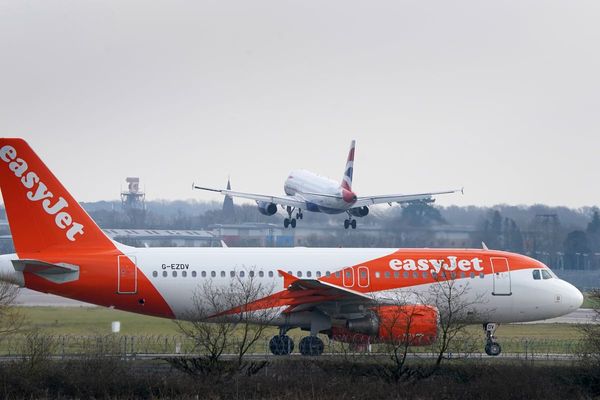
Recent efforts by Meta and Twitter to charge users a monthly fee for a verification badge are triggering a backlash from an important group of users: creators.
The viral celebrities of social media, whose videos and posts range from fashion to home improvement tips, are reacting to the pay-for-verification plans with indignation and accusations of corporate greed. More than just being displeased at having to pay a new monthly fee, many creators claim the paid badges will devalue their hard work and unleash a flood of bad behavior that will tarnish the overall creator economy.
“It opens the door for so many negative things for a cash grab,” said Loren Gray, who has 24 million followers on Meta-owned Instagram, 54 million on TikTok, 3.7 million on YouTube, and 1.5 million on Twitter. “Considering how much social media platforms already make—that they’re willing to put people and consumers at risk for a monthly subscription is insane to me.”
Gray, like several creators Fortune spoke to, said that making verification badges available to anyone willing to pay a monthly fee will legitimize cyberbullies and scammers. Creators believe that bad actors and other types of trolls will feel empowered to inflate their public import with a blue check, lending credibility to toxic behaviors. “It completely takes away the entire purpose of verification,” said Gray.
Until now, Meta and Twitter awarded verification badges to users—generally public figures—at their discretion, and free of charge. For up-and-coming creators, obtaining a verified badge was a sort of validation, a sign that they had become important enough that their identity was worth protecting against impersonators and wannabes.
That changed in October, when Twitter CEO Elon Musk said he would make the service’s famous blue “verified” check mark available for purchase as part of a new premium subscription plan (and that Twitter would gradually remove legacy blue checks from non-paying users). When Twitter initially launched verification-for-purchase in November, it unleashed a barrage of chaos and misinformation. In one infamous example, a fake Eli Lilly account bearing a blue check tweeted that “insulin is free now,” sending the real pharmaceutical company’s stock tanking.
Twitter’s debacle made Meta’s decision to follow its lead all the more perplexing to many observers. The social media company said on March 17 that verification badges for Facebook and Instagram could be purchased for $14.99 a month by anyone on Android or iOS who uploads their driver’s license and selfie video to the platform.
According to Meta's website, the Verified initiative will “help creators establish their presence” with a service that provides impersonation protection, blue checks on both Instagram and Facebook, priority assistance, increased visibility and reach and “exclusive features."
“We launched Meta Verified with a high identity standard, placing deep focus on impersonation protections before, during and after verification,” a Meta spokesperson told Fortune in response to creator concerns, citing the program’s government ID verification process. “We’ve seen several instances of the system working as it should—spotting harmful behavior and protecting users from impersonation attempts.” The company declined to share any metrics with Fortune around income from Meta Verified.
A paradigm shift in social media
Some of the creator backlash may be due to the fact that Twitter and Meta are fundamentally shifting the assumption that social media is free. The introduction of paid verification by both companies implies that anyone with a dream of building a livelihood on social media must now pay an entrance fee to confirm their identities and navigate socials as a blue check. And creators who have paid their dues to earn a vaunted blue check—scraping their way though trending dances, integrating sponsors into feeds, and living in creator collectives—now feel threatened.
“A lot of people are unhappy about it, but I think it does remind me a bit of the student loan debt argument on a smaller scale,” says Vivian Tu, a financial literacy creator who has 1.6 followers on Instagram, 2.4 million on TikTok, 466,000 on YouTube, and 1,819 on Twitter. “Like, ‘Oh, I worked hard to get my blue check and now you can just get it for $14.’”
Meta connected Fortune with Blaine Anderson, a creator who runs a business that coaches men on dating. The vast majority of Anderson’s clients find her on Instagram, but despite her best efforts, Anderson was unable to obtain a blue check until paying for it from Meta Verified. She’s now “a fan” of the program. “I felt like the old verification system had a lot of problems; it felt very subjective,” she says. “I’m very engaged with the platform, which made it all the more important for me to have a way to distinguish myself from the copycats.”
Influencers with an existing blue check will be grandfathered into the new Meta verification system, and will not lose their badge if they don't pay—at least for now. Twitter by contrast, has threatened to revoke verification badges to legacy users who refuse to pay. Still, none of the six creators with whom Fortune spoke have plans to pay for Twitter Blue.
According to a recent report by Sensor Tower, cited in TechCrunch, roughly 385,000 of Twitter’s 450 million monthly active users pay for Twitter Blue on mobile.
It’s too early in the program for Meta to report revenues or subscriber numbers from its paid initiative (and it’s not clear whether Meta will disclose that information), but the company’s stock price has risen around 17% in the last month and 140% from its seven-year low in November. Analysts largely attribute this rebound to layoffs and stabilization in the company’s ad business in the wake of Apple privacy changes, per Bloomberg.
Another selling point for Meta Verified is priority assistance from Meta support staff. According to the company, paying users will get “access to a real person” for common account issues and “more protection from impersonation.”
But for creators like Tu, who said she has faced a significant amount of cyberbullying during her career, Meta will have to overcome a lot of skepticism. She cited long lag times in responses and general ineffectiveness when she reported cyberbullies to the platform in the past, and is “very skeptical” that the company will be capable of handling matters any better for paying users.
Many influencers and creators are waiting to see whether other social platforms, like TikTok and ByteDance, will also begin charging for verification. It’s also possible that Meta or Twitter could make changes to the paid plan that would make it more palatable to creators.
Several of the influencers with whom Fortune spoke said the platforms should at least differentiate paying users from legacy blue checks and public figures.
“There’s nothing wrong with a pay-to-play model, but there needs to be differentiation between who is paying for the upgraded services versus who is actually a public figure,” said Tu.
Paige Mackenzie, a video creator with 8 million TikTok subscribers and 390,000 Instagram followers, agrees. She’s verified on TikTok but is abstaining from purchasing blue checks on Instagram and Twitter because she doesn’t feel it’s “as special as it once was” now that blue checks are available to all paying customers. She says, “Maybe if it was a yellow checkmark or red ship or like a different color [for paying users],” she said, while describing the current for-pay system as very odd. “I don’t understand why they would open that to the public for purchase.”







